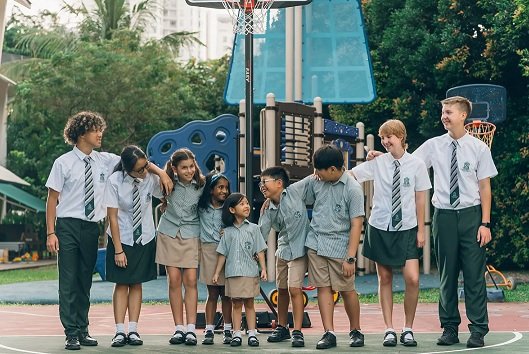In the bustling cosmopolitan hub of Singapore, education takes center stage as families seek a globally oriented learning experience for their children. The city-state is home to a diverse range of international schools that cater to expatriate communities and local families aspiring to provide their children with a well-rounded education. In this exploration, we delve into the landscape of international schools in Singapore, examining their diverse curricula, multicultural environments, and the impact they have on shaping globally minded individuals.
Diverse Curriculum Offerings
One of the defining features of international schools in Singapore is the diverse array of curricula they offer. These schools often follow globally recognized educational frameworks, providing students with an international perspective that goes beyond national boundaries. Some of the prominent curricula adopted by international schools in SG include the International Baccalaureate (IB) program, the Cambridge International Examination (CIE) curriculum, and various country-specific systems such as the American, British, or French curricula.
The International Baccalaureate program, renowned for its emphasis on critical thinking, creativity, and global awareness, is a popular choice among international schools in Singapore. It offers a continuum of education from the Primary Years Program (PYP) to the Middle Years Program (MYP) and culminates in the Diploma Program (DP) for senior students.
Multicultural Environments
International schools in Singapore pride themselves on fostering multicultural environments that celebrate diversity. With students hailing from various corners of the globe, these schools provide a melting pot where different cultures, languages, and perspectives converge. This multicultural ethos is embedded in the curriculum, extracurricular activities, and daily interactions, creating an enriching environment that prepares students for a globalized world.
Language plays a pivotal role in the multicultural landscape of international schools. Many institutions in Singapore adopt a bilingual or multilingual approach, recognizing the importance of linguistic diversity. Students often have the opportunity to study languages beyond the host country’s official language, further expanding their communication skills and cultural understanding.
Global Perspectives in Learning
The emphasis on global perspectives is a hallmark of international schools in Singapore. The curriculum is designed to expose students to a broad range of subjects and issues that transcend national boundaries. Whether it’s exploring global challenges in science, engaging with world literature, or participating in Model United Nations conferences, students are encouraged to think critically and develop a deep understanding of the interconnected world in which they live.
Experiential learning is a key component of global education in these institutions. International schools often organize field trips, international exchanges, and collaborative projects that allow students to apply their knowledge in real-world contexts. This hands-on approach nurtures a sense of global citizenship, fostering empathy, cultural sensitivity, and a commitment to making a positive impact on the world.
Holistic Development Beyond Academics
International schools in Singapore recognize the importance of holistic development beyond academic achievements. They offer a plethora of extracurricular activities, sports, arts, and leadership programs to ensure students receive a well-rounded education. These activities not only complement academic learning but also contribute to the development of essential life skills, such as teamwork, resilience, and leadership.
The emphasis on character education is another notable aspect of international schools. Values such as integrity, respect, and empathy are woven into the fabric of the school culture. Character-building programs, community service initiatives, and leadership opportunities empower students to become responsible, compassionate individuals with a strong sense of ethical awareness.
Cutting-Edge Facilities and Resources
To provide a world-class education, international schools in Singapore invest in cutting-edge facilities and resources. State-of-the-art classrooms, science laboratories, arts studios, and sports facilities create an environment conducive to learning and exploration. The integration of technology is a common feature, with schools incorporating digital resources, e-learning platforms, and interactive tools to enhance the educational experience.
Beyond traditional classrooms, many international schools in Singapore recognize the importance of outdoor spaces for learning. Campuses are often designed to include green spaces, sports fields, and recreational areas that contribute to students’ overall well-being. These facilities not only support physical health but also provide spaces for social interaction and creative expression.
Pathways to Prestigious Universities
International schools in Singapore boast a track record of preparing students for success at some of the world’s most prestigious universities. The globally recognized curricula, emphasis on critical thinking, and holistic development contribute to students’ readiness for higher education on an international scale.
The college counseling services provided by these schools play a crucial role in guiding students through the university application process. Experienced counselors assist students in exploring their academic and career interests, preparing for standardized tests, and crafting compelling college applications. The goal is to equip students with the skills and confidence to pursue higher education opportunities globally.
Parental Involvement and Community Engagement
The relationship between international schools and parents is a collaborative one, with a strong emphasis on open communication and involvement. Many schools encourage parental participation through parent-teacher associations, regular meetings, and involvement in school events. This collaboration is seen as essential in supporting students’ academic journey and overall well-being.
Community engagement extends beyond the school gates, with international schools often involved in outreach programs and partnerships with local organizations. These initiatives contribute to a sense of social responsibility among students, fostering a commitment to making a positive impact on the local and global community.
Conclusion
In the heart of Singapore’s vibrant education landscape, international schools stand as beacons of global learning and multicultural enrichment. The diverse curricula, multicultural environments, and emphasis on global perspectives contribute to the development of well-rounded individuals ready to navigate the complexities of our interconnected world. As these institutions continue to evolve and adapt to the changing educational landscape, the impact of international schools in Singapore resonates not only within the local community but on a global scale, nurturing the next generation of global citizens.





